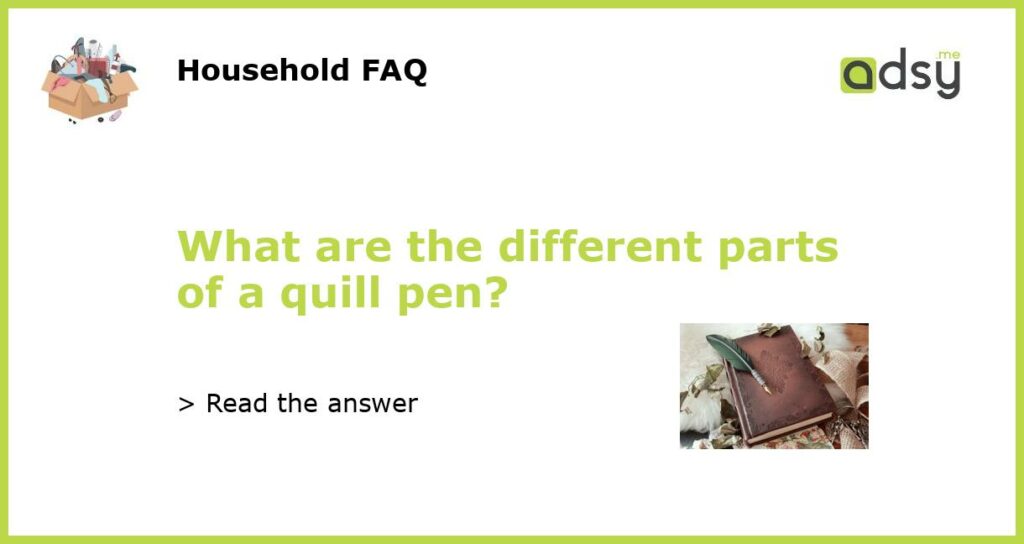The Handle
The handle of a quill pen is the part that you hold while writing. It is usually made of wood, bone, or metal and is designed to be comfortable to hold. The size and shape of the handle can vary depending on personal preference, but it is important to choose one that allows for a firm grip and control over the pen.
The Shaft
The shaft is the long, slender part of the quill pen that holds the ink. It is usually made from the feather of a large bird, such as a goose or a swan. The feather is carefully trimmed and shaped to create a smooth writing surface. The shaft is often hollowed out to create a reservoir for the ink, allowing the writer to write for longer periods of time without having to dip the pen in the inkwell.
The Nib
The nib is the pointed end of the quill pen that comes into contact with the paper. It is the most important part of the pen when it comes to the act of writing. The nib is usually made from the harder part of the feather, called the calamus. The feather is carefully cut and shaped to create a slit that helps regulate the flow of ink onto the paper. The shape and width of the nib can vary depending on the desired writing style. A wider nib will produce broader lines, while a narrower nib will produce finer lines.
The Inkwell
The inkwell is the container that holds the ink for the quill pen. It is usually made of glass, ceramic, or metal and is designed to be stable and easy to dip the pen into. The inkwell can come in various shapes and sizes, but the most common design is a small bottle or well with a narrow opening. The inkwell is often kept close to the writer’s hand for easy access.
The Quill Knife
The quill knife is a tool used to prepare the feather for use as a quill pen. It is a small, sharp knife with a curved blade that is used to trim and shape the feather. The quill knife is used to remove the outer layers of the feather, expose the calamus, and create a clean and smooth writing surface. It is an essential tool for anyone who wishes to make their own quill pens.






